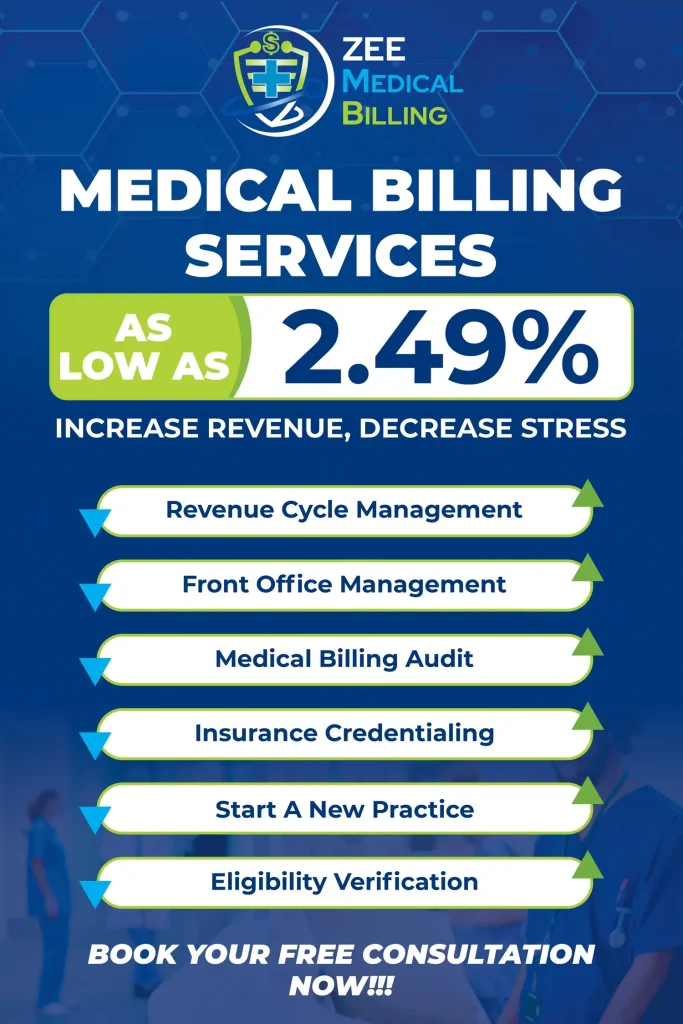What Is the KX Modifier in Medical Billing?
The KX modifier is a billing code for Medicare claims. It shows that the provider has met all the necessary documentation and coverage requirements for a service. It essentially expresses: “Yes, someone followed the rules.” We meet the requirements.”
KX Modifier = Documentation on File & Criteria Met
This modifier is especially common in physical therapy, durable medical equipment (DME), and colonoscopy billing, where specific coverage limits are in place. It informs Medicare that, despite caps or restrictions, the provider has the necessary medical justification for submitting a claim.
Also Read: Correct Billing Instructions And Usage for GA Modifier
KX Modifier Meaning and Purpose
Key Points
- Used to affirm that medical necessity and documentation requirements are met.
- Primarily used for Medicare, but some state Medicaid plans may accept it.
- People often apply it when service limits or thresholds are exceeded.
- Supports coverage decisions for claims under review.
Example
Suppose a Medicare patient exceeds the annual cap for physical therapy, but the therapy is still medically necessary. In that case, the provider appends the KX modifier to indicate that documentation supports the additional services.
When to Use the KX Modifier?
Common Scenarios
| Service Area | Reason for KX Use |
| Physical therapy | Patient exceeded therapy cap but treatment is still needed |
| Occupational therapy | Services continue beyond allowed limits |
| Speech-language pathology | To justify continuation past Medicare’s threshold |
| Durable Medical Equipment | Confirm medical necessity for extended use or frequency |
| Colonoscopy | Patient exceeded therapy cap, but treatment is still needed |
Practical Rule
Use the KX modifier when:
- The patient has hit a service limit, and
- You have documentation proving medical necessity.
Always retain supporting notes and forms in case of audits.
Also Read: Correct Billing Instructions And Usage for GY Modifier
KX Modifier vs. Other Modifiers
Comparison Table
| Modifier | Purpose | When to Use |
| KX | Confirms all medical necessity and documentation are on file | When exceeding limits or needing exception approval |
| GA | Expected denial, and no ABN was provided | Use when ABN is issued for expected denial |
| GZ | Expected denial, and no ABN was provided | Use when non-compliance occurs |
| GY | Service excluded by law from Medicare coverage | Use for statutorily non-covered services |
Benefits of Using the KX Modifier Correctly
- Supports payment even after the cap/limit is exceeded.
- Shows compliance with Medicare’s documentation policies.
- Prevents unnecessary denials or delays.
- Audits become smoother when someone requests documentation.
- Commonly expected in therapy cap exceptions and DME use validations.
Tip: Always train your billing team on when and how to use the KX modifier, especially for therapy and DME claims.
How to Apply the KX Modifier?
- Confirm Eligibility: The patient has reached the coverage threshold or service limit.
- Verify Necessity: The service is medically necessary based on the current condition.
- Document Clearly: Supporting records, chart notes, or doctor recommendations are on file.
- Append Modifier: Attach KX to the relevant CPT/HCPCS code.
- Submit Claim: Ensure clean documentation trails in case of audit.
Example
CPT Code: 97110 – Therapeutic Exercise Scenario: PT services have exceeded the cap, but continued therapy is needed. Billing: Submit as 97110-KX with justification documentation in the record.
Common Mistakes to Avoid
Using KX Without Documentation
- Don’t use KX unless you genuinely have medical necessity records. Medicare may audit and recoup payments.
Applying KX Automatically
- Avoid defaulting the KX modifier for every patient. Use only when required thresholds or special conditions apply.
Forgetting to Train Staff
- Billing teams may not be aware when a cap is reached. Set alerts or workflows to flag KX-needed cases.
Mixing with Incorrect Modifiers
- Never combine KX with modifiers like GZ or GY, which contradict its meaning.
Also Read: Correct Billing Instructions And Usage for GZ Modifier
Best Practices for KX Modifier Use
- Set EHR alerts when patient limits are nearby.
- Educate your billing and therapy teams.
- Always keep records organized and retrievable.
- Review CMS updates for covered services that may require KX.
- Use checklists to confirm when modifier use is valid.
FAQs
What does the KX modifier mean?
The KX modifier indicates that the provider has followed all the rules for medical necessity. It also shows that the necessary documentation for the billed service is complete. Providers use it when billing Medicare beyond standard limits.
When should I use the KX modifier?
Use the KX modifier when a service exceeds a coverage cap or threshold but remains medically justified. This is common in physical therapy, speech therapy, or DME claims.
Can I use the KX modifier with commercial insurance?
The KX modifier is primarily for Medicare, but some Medicaid or private insurers may recognize it. Always check with the payer’s billing guidelines.
What happens if I misuse the KX modifier?
Incorrect use may lead to audits or claim denials. If Medicare determines the documentation doesn’t support medical necessity, they may request a refund.
Is the KX modifier mandatory in therapy billing?
The default setting does not require it. However, therapists find it necessary when therapy caps are exceeded, and they require more services.
Final Thoughts
The KX modifier is a crucial tool for Medicare billing when services exceed defined limits but remain medically necessary. Proper documentation is key—using KX without it invites denials and compliance risks. Providers can receive payment for eligible care by using the KX modifier correctly and maintaining good records. This also helps them follow Medicare rules.
Need Expert Medical Billing Services?
Zee Medical Billing provides professional billing solutions tailored to healthcare providers across the United States. In addition to offering top-tier support from our main office, we proudly serve clients in Illinois, Indiana, California, Kentucky, New York, Washington, Georgia, Alabama, South Carolina, Texas, Pennsylvania, Ohio, New Hampshire, Nevada, Massachusetts, Hawaii, Arizona, and Colorado! Whether you’re looking to streamline your revenue cycle or improve claims accuracy, you can reach out to us to learn more about how we can support your practice.









